How to Train Your Dragon: The Hidden World
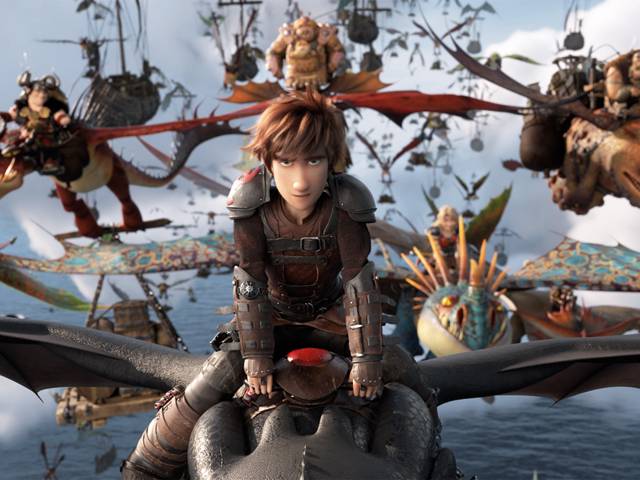
Training to Let Go
Cast: Djimon Hounsou, Jay Baruchel, Cate Blanchett, Gerard Butler, Jonah Hill, Kristen Wiig, T.J. Miller, Christopher Mintz-Plasse, America Ferrera
Director: Dean DeBlois
Genre: Action, Adventure
Running Time: 94 minutes
Synopsis: From DreamWorks Animation comes a surprising tale about growing up, finding the courage to face the unknown…and how nothing can ever train you to let go. What began as an unlikely friendship between an adolescent Viking and a fearsome Night Fury dragon has become an epic adventure spanning their lives. Welcome to the most astonishing chapter of one of the most beloved animated franchises in film history: How to Train Your Dragon: The Hidden World.
Now chief and ruler of Berk alongside Astrid, Hiccup has created a gloriously chaotic dragon utopia. When the sudden appearance of a female Light Fury coincides with the darkest threat their village has ever faced, Hiccup and Toothless must leave the only home they've known and journey to a hidden world thought only to exist in myth. As their true destines are revealed, dragon and rider will fight together"to the very ends of the Earth"to protect everything they've grown to treasure.
How to Train Your Dragon: The Hidden World
Release Date: January 3rd, 2019
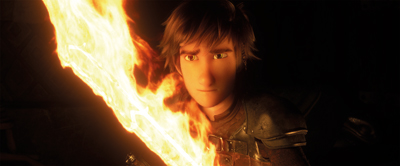 About The Production
About The Production
Training to Let Go
The Hidden World Begins
How to Train Your Dragon series architect Dean DeBlois has an undeniable passion for bringing dreamlike flights and astonishing tales to the big screen. He is equally focused on allowing the wondrous worlds he dreams up to serve as a backdrop for intimate stories that speak to the most human of conditions"finding the strength to follow your convictions, trusting love when it comes along…and grappling with when it's time to let go.
For DeBlois' imaginations of Hiccup, Astrid, Toothless"who live in one of the cinematic universe's most famous Viking villages"their journey on the big screen has mirrored key moments in his own life and of those to whom he is close. The writer/director's keen sense of adventure, wide-eyed imagination and unique ability to explore simultaneously deep joy and heartbreaking loss has given his avatars a life beyond the screen. They've become an enchanting part of our own world, regularly drawing in new fans who revel in the franchise's emotional and psychological depth.
Since audiences last met the people of Berk, the villagers have seen their sleepy hamlet become awash in messy, astonishing dragons. This new normal"no matter how beautiful, noisy and delightful"has become unsustainable. "A perennial underdog, Hiccup is now the rookie chief of his tribe," DeBlois says. "He's partnered with Toothless, who is the rookie alpha of the largest flock of dragons on Earth. Together, they've been instructed by Hiccup's mother, Valka, in the arts of dragon rescue…while Hiccup has fashioned armor made out of Toothless' scales. They spend their time attacking trappers' barges, freeing dragons and whisking them back to their overcrowded island."
Now that Hiccup, the most unlikely of Nordic chieftains, has defeated the villainous Drago and laid his father to rest, he wonders if he has achieved his boyhood dream of the perfect dragon-human existence. Quickly, however, this utopia is proving to be untenable…for two-legged and two-winged creatures alike. The bucolic isle is running out of room, and with the vast number of dragons underfoot and overhead, the formerly quiet village is beyond madness.
But a far more dangerous threat looms on the horizon. The increasing visibility of dragons in their world has exposed the magical creatures to those with a much darker agenda. Freedom, it seems, has come at a cost. "As a young leader, Hiccup's taken on the burden of figuring out where dragons must go," DeBlois says. "Still, his hidden fear is that he's ultimately unworthy without the creature who saved and defines him. He's missing the fact that Astrid, who is very worthy and capable, not only sees that in him…but wants to be his partner and relied upon. She is attempting to shed light onto Hiccup's problem of letting go, and feels that he shouldn't stop the natural course of Toothless finding his own destiny."
While the filmmaker created the last chapter to serve as Hiccup's coming-of-age story, from tenacious runt of the litter to growingly wise chieftain, DeBlois knew that the key to The Hidden World was in exploring how the Viking's relationship with Toothless would bend the arc of their shared destiny. We find a Hiccup grappling with putting first the needs of his dearest companion, even though the he knows he must eventually let his best friend go.
Producer Brad Lewis, known for his work on beloved films such as Ratatouille, reflects on the appeal of joining this massive creative undertaking. "It is such a thrill to make an adventure that is equal parts sincere and epic"one that helps an audience feel such a gamut of emotion," Lewis says. "We're so lucky that the first two Dragons have been so embraced…and I'm thrilled to now be a part of such an unexpected new chapter in this series. This film is not only welcoming to Dragon newcomers, it's also deeply satisfying to diehard fans."
Lewis underscores that he has long experienced and championed animation as a medium, not simply a genre, and he found a kindred spirit in DeBlois. "The Hidden World offered this opportunity of a love story that's equal parts epic adventure and deep emotion," he says. "Dean's given us a fascinating universe, one with the dragon's Hidden World at the story's core. It's a mystery and an answer. It teases the audience and ignites imaginations."
Producer Bonnie Arnold, who has been with the franchise since it was developed in 2006, reflects that our heroes are on parallel paths. "The coming of age of Toothless heralds the Reign of Hiccup," she says. "Hiccup is the forward thinker of the Vikings who has long wanted peace for his people. That said, everything he imagined as a boy has changed. He has begun to understand that his dragon is a wild animal, and that Toothless' instincts are guiding him where he must go. Toothless is the leader of his dragons in the same way that Hiccup is leader of his Vikings."
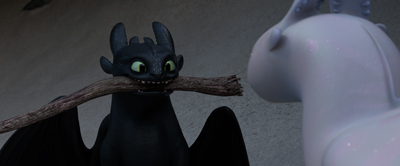 To Arnold, DreamWorks Animation movies' embrace of the unique is what makes them so distinctive. The producer of the landmark Toy Story and Tarzan believes that the best films are simply stories well told. "As complex as the Dragon movies are visually, that's a nice complement to what simple, brilliant stories they are," she says. "This is the best version of the universal story of a boy and his dog, and this chapter embodies an unbelievable friendship told through Hiccup's eyes. Many people identify with his brave, coming-of-age journey."
To Arnold, DreamWorks Animation movies' embrace of the unique is what makes them so distinctive. The producer of the landmark Toy Story and Tarzan believes that the best films are simply stories well told. "As complex as the Dragon movies are visually, that's a nice complement to what simple, brilliant stories they are," she says. "This is the best version of the universal story of a boy and his dog, and this chapter embodies an unbelievable friendship told through Hiccup's eyes. Many people identify with his brave, coming-of-age journey."
Chris Defaria, president of DreamWorks Feature Animation Group, shares DeBlois' passion for bold storytelling that refuses to play it safe. For the executive, this begins and ends with the talent at the studio's Glendale, California, campus. "DreamWorks movies are ones about people with crazy big dreams. Dean has taken these characters and allowed them to soar"in what is one of the biggest, most epic movies ever made. We believe the audience will discern the difference in something that has been carefully built through artists using the best technology to tell the best stories."
For some time, deFaria has likened animation to a gateway medium for moviegoers. "Audiences discover films at a young age through animation, and if we do our jobs well, they never outgrow it," he says. "Those of us making family entertainment"of which animation is an enormous part"have to take seriously our responsibility to engage our audiences with timeless films that celebrate how much we love this art. We must tell wonderful and amazing stories that involve memorable characters, and we're making a bet on excellence and quality."
DeBlois appreciates that deFaria was able to help unlock the truth of his vision, as well as ensure they had the tools necessary to make The Hidden World more than the team ever dreamed. "I feel like Chris has this great ambition for our studio to venture out of safe territory of animated stories," the director says. "He wants to test our limits on tech capabilities and audience reach. He's not afraid of speaking to a more mature audience, and I love that he has the excitement of a kid and deep enthusiasm for innovative storytelling"as well as new technology."
The Characters
Call Of The Wild
Meet The Light Fury
When DeBlois considered the engine of change for this chapter of Toothless and Hiccup's evolution, he began to wonder what coming-of-age would look like for the Night Fury…as the dragon grows to yearn for a life beyond humans. "For so long, he has been Hiccup's constant companion," says the director. "But he has begun to stray from that bond as he is drawn by the call of the wild"and by instinct and maturity." To stay true to the narrative, the storytellers had to contemplate the unthinkable. "We asked ourselves if we could have their relationship completely fall apart, but still bring them back together, stronger than ever," DeBlois says.
Once Toothless first encounters the Light Fury (so named by Astrid)"a stunning and shimmering all-white dragon who exists on pure instinct"our alpha male finds himself pulled to the wild world from which she comes and will assuredly return. "Toothless is conflicted by loyalty, but he's drawn to what is so natural," says DeBlois. "For him, that's embodied by the Light Fury; she offers an innocent existence untainted by humans."
This full-circle moment is a bittersweet one for the best friends who've grown so dependent upon one another. "Before Toothless and Hiccup came together, humans and dragons saw each other as enemies," Lewis says. "Only through their meeting did they affect each other's world. Now, Toothless is doing the same thing as an alpha dragon that Hiccup has done in Berk. They're confronting what the natural place is for every creature"for Toothless to live a full-dragon life and vice-versa."
In the producer's mind, the Light Fury serves two functions. "She's a clarion reminder that wild dragons will attack a human when they see them, and that when you find love, that's where you belong. Light Fury is a lioness drawing Toothless back to the savanna."
That said, DeBlois admits that any stranger breaking up our star couple had to be both likable and spectacular. "The Light Fury promises a family and the propagation of Toothless' species," he says. "She's essentially there to lure Toothless back into the wild and to his rightful home. To make sure the audience is not resentful of Light Fury, we had to give her such a charming and distinct personality that she'd win us over. These are wordless transitions in animation, and imbuing her with these characteristics required our hitting familiar marks for humans."
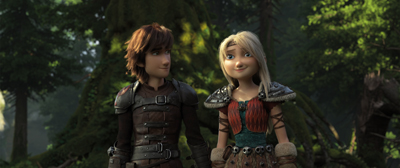 When pondering Light Fury's individuality, the team had to grapple with a number of obstacles: including how to design a variant of Toothless' species. The animators leaned into all things feline"behavior inspired by the confidence, elegance and aggression of big cats. Just as Toothless' repertoire continues to be influenced by the real behaviors of horses, dogs and other domesticated animals, the animators had no interest in leaning on anything too anthropomorphic for Light Fury. Says DeBlois: "As Light Fury and Toothless interact, we are constantly riding up to that line to communicate attraction, danger, curiosity…the subtle developments of a relationship."
When pondering Light Fury's individuality, the team had to grapple with a number of obstacles: including how to design a variant of Toothless' species. The animators leaned into all things feline"behavior inspired by the confidence, elegance and aggression of big cats. Just as Toothless' repertoire continues to be influenced by the real behaviors of horses, dogs and other domesticated animals, the animators had no interest in leaning on anything too anthropomorphic for Light Fury. Says DeBlois: "As Light Fury and Toothless interact, we are constantly riding up to that line to communicate attraction, danger, curiosity…the subtle developments of a relationship."
For Lewis, the Light Fury is reminiscent of some of the most glamorous actresses to grace the silver screen. "She's Julie Christie, Ingrid Bergman and Princess Grace," he says. "Light Fury is equal parts iconic light, strong, elusive and opinionated." That so, the challenge for the animators was to communicate her indomitable spirit…wordlessly. "We leaned on the elegance of a lioness. You're 100 percent reliant on the glance, posture, eyes and reaction in the body; Dean and Simon Otto [head of character animation] have been developing her language since day one."
One of the more iconic moments in The Hidden World was one of the first sequences to be led into production: Toothless and Light Fury's first date on the beach. Set to playful, romantic chords from series composer John Powell, the scene is primarily music-driven and largely a dance. While Toothless fumbles through his amateurish knowledge of the opposite sex, he must rely upon the creature in his life who loves him more than any other: Hiccup.
Toothless first captures the attention of his feral love by adopting a behavior he learned from humans, specifically Berk's new chieftain. "We based this on the story of Cyrano de Bergerac and gave it a lot of love and care," DeBlois says. "Hiccup encourages Toothless to replicate dragon courtship behaviors he's observed. Still, this is a stunning female of the wild who expects Toothless to know what he's doing. Of course, he's a bumbling amateur…with Hiccup cringing on the sidelines."
So what's a dragon to do when he's head-over-heels in love? "Toothless has no references; he's the last of his kind, and there's underlying sadness to that," DeBlois says. "Ironically, the one thing he learns from a human"drawing in the sand"is what wins her over."
In the case of art imitating life imitating art, the production's familiarity with the dragon heroine mimics Toothless' deepening insight into this elusive creature. "Since we animated the rig around Light Fury during our very first tests, we have been playing with proportions," DeBlois explains. "She's an ongoing creation, and that means our animators are dying to go back into the first sequence where we meet her with everything they've learned along the way. The subtleties of her reactions to the other experiences we are giving her in the movie continue to evolve, and that allows us to shape subtleties in her attitude and her performance."
Adds Lewis: "There is a subtle softening that comes into this icy feral queen as our animators grew to understand her more," adds Lewis. "This was less by design than serendipity; each beat she starts to warm up."
Riders and Dragons
Berk under Chief Hiccup
While Light Fury is the principal new headliner in the How to Train Your Dragon series, The Hidden World offers long-time fans and curious newcomers a plethora of beloved favorites and terrifying new villains. The characters with alpha instincts on Berk are as numerous as the dragons, but their impulses are fortunately restrained by Hiccup's leadership.
That juxtaposition makes life on the island very curious, and we find the villagers more committed to Hiccup than ever before. Now a clutch of dragon rescuers known as the Dragon Riders, all of Hiccup's friends have newly upgraded armor that reflects the unspoken bond with his or her dragon.
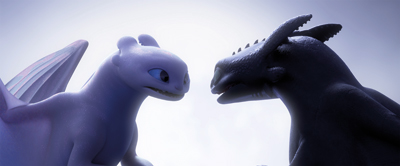 As arguably the most fearless Viking to ever walk the shores of Berk, Astrid (her dragon is Stormfly, a Deadly Nadder) has long pushed, cajoled and encouraged Hiccup to believe in himself. She has risen to her calling as a fellow leader, challenging Hiccup to celebrate Stoick the Vast's accomplishments, but also to carve out a name for himself and become the man their people need him to be. Arnold explains: "Hiccup sees Astrid through rose-colored glasses, but he's also quite distracted when Toothless meets the love of his life and he starts to feel left behind. Astrid underscores that she is right in front of Hiccup…but she won't wait forever for him to get it together."
As arguably the most fearless Viking to ever walk the shores of Berk, Astrid (her dragon is Stormfly, a Deadly Nadder) has long pushed, cajoled and encouraged Hiccup to believe in himself. She has risen to her calling as a fellow leader, challenging Hiccup to celebrate Stoick the Vast's accomplishments, but also to carve out a name for himself and become the man their people need him to be. Arnold explains: "Hiccup sees Astrid through rose-colored glasses, but he's also quite distracted when Toothless meets the love of his life and he starts to feel left behind. Astrid underscores that she is right in front of Hiccup…but she won't wait forever for him to get it together."
For Cowell, it has long been vital to have strong female characters either adored or admired by her audience. "I wanted to see the girl kicking butt, and that's what I love about Astrid," Cowell says. "Similarly, Valka is an interesting character as well because she's just so cool, but ethereal at the same time. She's not some stereotypical mom figure. These are strong women, and that's what I want to see. We need that for the future. We need girls seeing those strong heroes up there on the screen."
Our resident card-carrying dragon nerd Fishlegs (his dragon is Meatlug, a Gronckle) has just discovered the Crimson Goregutter, an old, grumpy"and massive"dragon with a huge rack of antlers. Quite uncharacteristic of its breed, the Goregutter has taken a liking to Meatlug's baby, Fishmeat, the young dragon to which Fishlegs has been acting as a surrogate father. Lewis says: "Fishlegs is the closest thing to a maternal character we have in the story."
Just as boastful as ever, Snotlout (his dragon is Hookfang, a Monstrous Nightmare) is always trying to overcompensate for his less-than-Viking-ly attributes. Although he's a poor fighter, he's constantly bragging about his imagined skillset. Desperate to capture the brilliant Valka's attention, he's incessantly kissing up to the most accomplished Dragon Rider on Earth. Says Lewis: "He's still short of stature, short of intellect, but has no shortage of confidence."
Much to Snotlout's chagrin, his rival, Eret, son of Eret (his dragon is Stoick's Skullcrusher, a Rumblehorn), has become a second-in-command to Hiccup"and continues to melt the hearts of his countless fans. Laughs Lewis: "In Snotlout's mind, he is Eret. Well, the funhouse-mirror version."
For their part, self-obsessed twins Tuffnut and Ruffnut (their dragon is Barf & Belch, a Hideous Zippleback) continue to be their greatest rivals to one another. Tuffnut fancies himself Hiccup's advisor, preparing him to become a full-fledged leader of Berk, and wants to coach the chieftain into becoming something he's not. Critical of everything, yet completely self-absorbed, Tuffnut is good for an observation that's 180-degrees opposite of reality.
Tuffnut's (better?) half, Ruffnut, according to Dean, is still completely vain and oblivious to her surroundings"as well as any danger. Accidentally (?) left behind on a mission, Ruffnut has become a prisoner of Grimmel, the biggest threat to ever approach the shores of Berk. Unfortunately for anyone who has spent more than 10 seconds with Ruffnut, Grimmel will soon realize that he just made the worst mistake of his career in villainy. After endless vapid musings of how everyone is in love with her, Ruffnut annoys him into releasing her.
Hiccup's mother, Valka (her dragon is Stormcutter, a Cloudjumper), brings her years of experience as a dragon-rescuing vigilante to the island. For the past year, she's been training our young Vikings in the arts of dragon rescue. "Valka is coach and quiet confidante to Hiccup," says DeBlois. "She spearheads this drive to find another preserve, but knows that greedy men will always find a way…"
When Hiccup lost Stoick, the mighty blacksmith Gobber (his dragon is Grump, a Hotburple) became a father figure to him. Gobber had long guided Hiccup in the ways of the Viking, and he's been the first to jump to his charge's defense. Gobber sees that this nerdy young man will never have an answer that's alpha-male, and is wise enough to realize that might be just what the Vikings need. As Lewis puts it, "Hiccup bends the prism around into a Hiccup point of view."
Undoubtedly, the most dangerous threat to Berk and its dragons is Grimmel, who has spent a good part of his life hunting Night Furies, the most feared of all dragons, into virtual extinction. Grimmel knew Stoick back in the day and deeply respected the Viking chief's early attempts to eliminate all dragons and make the world safer for humans.
The real reason Toothless was orphaned, this villain, according to the director, believes "the only good dragon is a dead one. He serves as the force of change that causes dragons to leave our world and return to the history we know. Grimmel (his dragon is a Deathgripper) is the epitome of superiority complex and he refuses to share his world with dragons, which he considers to be vermin.
"When he discovers that one has survived"at the hands of Hiccup"as a matter of pride, Grimmel's going to kill Toothless," continues DeBlois. "He promises to teach this boy"who seems intent on ushering in an era of peaceful coexistence"a lesson about dragons and humans…and how humans shouldn't have to share their world. When he finds out that Hiccup taught Stoick a different way, that dragons could live freely among humans, he believes that is a toxic idea. And he will smother that notion before it spreads."
In the filmmakers' minds, Hiccup and Grimmel have opposite souls, and they represent harmony vs. intolerance. "Grimmel sees a dragon as something to be dominated and eliminated," says Lewis. "Hiccup sees them as beasts with a heart and soul, while Grimmel thinks the extinction of dragons would make the world a better place." 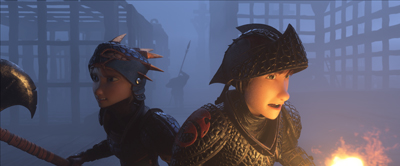 The Design
The Design
Process and Methodology
Creating the Magic
Whereas Valka lived in a hidden sanctuary"the oasis home of the Bewilderbeast"which was greenhouse-like and wrapped in a layer of ice, the Hidden World of the Caldera is the mythical home of dragons. This network of chambers and tunnels that wrap around the Earth is where these majestic creatures"who are born out of steam, heat and magma, the internal elements of Earth"live to this day.
In Hiccup's time, they've come to wander the upper world of humans…and get into trouble. The process of bringing the Caldera, as well as every other sequence in this ultimate chapter, has been equal parts painstaking and labor of love.
Now that he has lived within the world of Berk and dragons for the better part of a decade, DeBlois is able to be reflective about the endless editorial decisions required to craft this massive universe, and the number of voices he must filter. "Stories are specific, 90-minute, emotional equations," he says. "There are lots of depths within these arcs and relationships, and new ideas must be diagnosed. We are servants toward the story, so any constructive criticism challenges me to decide whether I like an idea. We have to ask ourselves if it revelatory toward the depth of a full idea…or if it's merely frosting."
Despite the decade of work behind him, DeBlois is quite Zen about the evolution of his epic adventure. "The story eventually tells us what it wants, and this gave us Toothless' coming-of-age tale. He has grown from being mostly an animalistic sidekick"and a danger that turned into a cuddly pet"to a stalwart, consistent buddy. This film represents the rise of Toothless and the dragons' return to their subterranean world…as well as a promise of days to come."
The filmmaker says that the nature of animation is an iterative one, and fortune favors the patient. "There is a lot of scrutiny on the story and time to test the different directions and to find worth in experiments," DeBlois says. "The moment we start storyboarding, we encounter problems with pacing, character interactions. As we move into editorial, issues, developments" both problems and solutions"present themselves." He pauses: "The greatest challenge in making an animated film is to stay constantly attuned."
Lewis owns that the production's greatest luxury has been its process and methodology. "Dean can try out permutations of ideas within the script. He'll refine the message, concept and emotions through every one of those iterations. Then he'll continue to refine it as we move through production. From the story stage to the animation and voiceover ones"from storyboard to 3D-camera layout to the visceral"making this film has been watching a rose blossom. We fill that with color…and we end up in tears during score week."
For Cowell, the creator of the How to Train Your Dragon phenomenon, watching the evolution of a labor of love she began so many years ago has been cathartic. She calls out the leadership of DeBlois in particular. "It's very unusual to have one person directing an animation trilogy because they take such a long time to make," Cowell says. "I can't believe how lucky we have been to have somebody with such a strong creative vision at the helm"who can tell a story visually but also with emotion; Dean can do the action and the heart. We've also had that strong leadership write through all three movies." She pauses. "We're also backed up by this team at DreamWorks, who are at the forefront of what you can do in animation. I've always felt"right from the beginning of walking into the studio"that feeling that you can make the impossible happen; that's the thing about going into the cinema that I love."
Revolutionizing Shadows & Light
DWA Launches MoonRay
Because a feature-length animated film is made up of approximately one-half billion digital files, DreamWorks Animation movies rely heavily on technology. In some parts of Hidden World, there are more than 100,000 digital files for one single frame. This massive undertaking is all driven by an onsite processor at the DreamWorks campus in Glendale, which houses 48,000 processing cores.
For far too long, lighting has been the bottleneck that restricted the ambition of animated films, even for a studio leading in technological advances. "Now, we have a breezy and powerful tool at the back end that allows us to deliver on the promise of huge worlds"full of lush, beautiful settings and many more characters than we would have been able to render before," says DeBlois. "What was once starting anew every time a shot was delivered is now a conversation."
The director gives that nod to Chris deFaria, who joined DreamWorks Animation during the development of proprietary MoonRay, a revolutionary ray-tracer whose function is in lighting animations, rendering in real time. A brilliant tool that calculates light as it is in the real world"mirroring how shapes bounce off of fabrics and surfaces"MoonRay injects billions of light rays into a scene and gives sense to light and shadows based upon the path they take in the natural world. Indeed, this step in the CG animation process is what brings images to life.
DeBlois walks us through the process: "MoonRay is this advanced form of lighting our movie, which is the last step. When Chris came aboard, it was in development but wasn't going to be ready for a couple of years. He made it a mandate that whatever had to be done to make this available for Hidden World just had to be done. It allowed us to create final images that are so rich"both in terms of complexity and in subtlety."
Once deFaria saw the astonishing work DeBlois' team was conducting, the decision was made. "There was no way this ray-tracing device wouldn't be available for Hidden World," he says. "This will be the first on-screen representation of our updated workflow involving two very powerful tools: the animation tool of Primo, and MoonRay, our first ray-tracing renderer. It's supported by fantastic third-party tools. That makes DreamWorks a more nimble company, as well as one that can innovate and grow in the areas in which the audience is most likely to perceive."
The producers and DeBlois proudly admit that their ambition for the look of this epic adventure grew with this fascinating new tool. "Now we can handle vast amount of characters, as well as the rich, intricate detail of our dragons," the director says proudly. "Where we might have had to avoid contact with all sorts of rich, lush foliage in the past, our characters can walk through ferns or effortlessly brush against tree limbs. It's astonishing what it has freed us up to do."
While lighting is one of the last steps in animating, the filmmakers admit that a commitment to streamlining kept everyone sane. "Our visual effects supervisor, Dave Walvoord, made a choice to allow us to become more collaborative across departments," says Lewis. "Animation has typically been siloed, resulting in a hand-offs approach from department to department that had been tough to overlap. Now, we have a new workflow where multiple departments can simultaneously work on a problem from other departments. This resulted in more collaboration among the crew, all artistically designed."
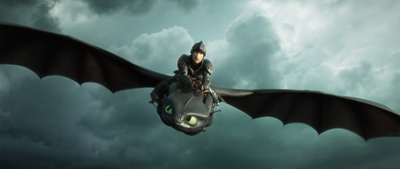 The Fire This Time
The Fire This Time
A Technological Breakthrough
MoonRay not only make details crisper and gives artists the ability to design new elements, for Hidden World, it also allowed them to create photorealistic fire on screen for the first time ever. Not only are the dragons blasting and belching fire, many scenes throughout Berk and New Berk are lit by the element: candles, torches, dragon fire"even a chandelier of fire.
Head of lighting Pablo Valle knew from the beginning of the franchise that this posed a potentially impossible challenge to all on the DreamWorks campus. Before MoonRay, the artists created a fire effect using red, yellow and orange lighting, rather than crafting and rendering "actual" fire. "We tried to mimic fire using a variety of techniques, but it never looked as realistic as we wanted it to be," Valle says.
Prior to the ray-tracing tool, part of the reason "real" fire wasn't possible was that it was too complicated and time-consuming to render. With MoonRay, however, the "time-to-first-pixel""the time it takes until the artists see the first pixel appear, to measure how fast the image is being rendered"is nearly instantaneous. "Now, this short turnaround allows the artists to focus on the art," Valle says. "You can change your mind. You can try new things. You can explore. The speed has truly opened up a whole new universe for us."
The visual-effects department starts by creating the simulation, and the lighting team brings the image to life. The result is a photorealistic fire that bounces and flickers as it would in real life. "What you get is an incredible subtlety of color, of flicker, of fire feeling alive," Valle says. "You get a very believable scene that has all the range of realistic fire, with colors and shadows moving around."
Larger Than Life
Creating Grand Landscapes and Vistas
With the technical capabilities of MoonRay, DeBlois' awe-inspiring vision is taken to the next level in the final film in the trilogy, particularly in the Hidden World of the Caldera environs, which has cascading waterfalls and glowing foliage, as well as in Berk, elevated at 52,000 feet and filled with towering trees and hefty clouds. "These environments are significantly larger than anything we've done before," Walvoord says. "MoonRay grants us the ability to put everything we want into our world. It's incredibly liberating for filmmakers."
One example of the film's grand scale is a scene that takes place in the Hall of Berk, where Hiccup and Astrid rally their people. Here, we see nearly 200 characters dining together, many sporting beards or wearing fur"elements that require a great deal of computational resources. In this one scene alone, there are more than 150 mugs, 200 spoons and bowls, 350 apples, 10,000 rocks and 60,000 strands of hay. In addition, the camera is following a group of main characters walking through the crowd. This means that any member of the crowd that appears close-up with the main characters must be portrayed in the highest detail. "Cheating" with lower quality versions of the characters just wasn't possible.
"Those are really complex challenges," Walvoord says. "We wanted to push the boundaries with the number of characters shown in a single shot, their wardrobe and their interaction with the environment. I've never worked on a movie that had this much intricacy."
Dragon in the Details
Designing 65,000 Dragons and 68 Million Mushrooms
Collaborating closely with Oscar®-winning cinematographer Roger Deakins, Walvoord and his VFX team were able to create scenes that were detailed but not overstimulating for the audience. They worked with Valle and the lighting team to use light to accentuate certain elements and draw the viewer's eye to what is important. It's a welcomed problem to have; a renderer that can create images so realistic, the images have to replicate the real world.
That new artistic freedom that MoonRay provides is seen not only in the grand scale of the film, but also in the minute details throughout. For instance, there are 2,000 unique character pieces in Hidden World including hair, clothing and accessories. In the village of Berk, the blacksmith shop alone contains 1,097 unique props and assets. There are even 756 nails in Hiccup's house.
MoonRay allows for complicated details to be brought out on film; for instance, Hiccup has 3,620 of Toothless' discarded scales comprising his body armor. In the first movie, there could only be eight dragons in a single scene or the system would crash. This time, there are more than 65,000 dragons in one shot of the Hidden World of the Caldera"the most of any shot in the film. Additionally, in the Caldera, there are a mind-boggling 68 million mushrooms and 79 million corals.
In Hidden World, Hiccup is not the only principal character to use the fallen scales of his dragon to create fireproof armor. Rather than design a new suit that mimics the dragon scales, the artists took the exact previously modeled dragon scales and "glued" them onto the armor. "We were able to build those suits with a completely creative approach, knowing MoonRay could render the complex images," Walvoord says. "We wanted the world to feel like it was a continuation of the characters. We want the audience to be emotionally invested in everything. You don't think about technology supporting emotion in a story, but it really does."
The Music
Bathe in the Sounds
Compositions of the Film
From world-famous Studio 1 at Abbey Road Studios in London, DeBlois was joined by trilogy composer John Powell with 98 musicians on the floor"a hand-selected orchestra that Powell has been refining over years. With all their favorite players gathered together under one roof, the director and composer reflected on the journey they began together more than 10 years ago…and the satisfaction that comes from discovering where two best friends will arrive.
For DeBlois, scoring represents the stage of Hidden World where we can put his work into the world of Powell, allowing the composer to create a custom soundtrack that refreshes everything. "I'm a big believer that music is half of storytelling," says DeBlois. "Putting it in the capable hands of these musicians and John elevates every moment in the story. So much is communicated by way of the music that dialogue, and even acting, cannot do. We've created sequences that are not only supported by the music, they're actually driven by it."
For a medium that takes so long to come together, this step is the light at the end of the tunnel for DeBlois. "You think 'No matter how tough it is and how complicated it gets in the making of the movie, one day we'll be at Abbey Road with a hundred of the best musicians in the world with John writing and performing a score that's going to elevate.'"
DeBlois acknowledges that he's come to rely upon Powell's canny ability to often carry an idea over the finish line. "John has his own thematic material that weaves almost like a harmony with the story and themes," says the director. "Often, he'll come up with a subset of themes that support and bolster those characters"echoing what we're trying to say in the overall story. He continually tries to outdo himself, and this is his last opportunity within the trilogy. It's spectacular and his best work yet."
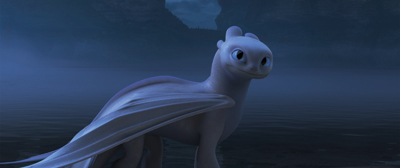 Nowhere is that more evident for the director than with the most poignant selection of the film: the dramatic theme for Hidden World. "This theme is everything you hope it will be," DeBlois says. "It's got breadth and grandeur; it's full of discovery and exactly what we wanted that sequence to be."
Nowhere is that more evident for the director than with the most poignant selection of the film: the dramatic theme for Hidden World. "This theme is everything you hope it will be," DeBlois says. "It's got breadth and grandeur; it's full of discovery and exactly what we wanted that sequence to be."
As DeBlois has involved his composer all these years, Powell has spent much time considering how to end the trilogy. "After the second film, Dean told me a bit of the story and I've been thinking about it ever since," says Powell. "The main approach is asking ourselves, 'how do you end anything?' Musically, everything is set up for the finish of a relationship with somebody, how to leave. That's the hardest thing we've got to do, the transition.
"It's not just finishing it; it's a conclusion," the composer continues. "Musically, I've been able to be compositionally rigorous, which means that I've been able to think more carefully about how to use all the old and new themes. This allowed us to make sure they all wrap up in the right way. I realised that for the past two months I've been working hard to make sure everyone cries."
For Powell, his aim is less about working with instruments to achieve signature sounds as it is about melodies and harmonic content serving the story. The introduction of Light Fury and Grimmel in particular allowed him to open up the Dragon musical canon. "We have the tunes from the first two movies, which I'm using very carefully," he says. "But we have created new melodies such as the fate theme and riff. I'm trying to bring those to the full potential, but, then hold back and use the old tunes so that they mean something."
One of Powell's signature decisions is the sparing, timely use of music to punctuate the precise moment that allows the audience to experience what the characters are feeling. It's vital to him to musically lead, and not to push. "It's important to stay behind the audience," he says. "If you've got a funny scene, try not to let the music be funny before it's funny. Otherwise, audiences feel manipulated. It's the same with emotion."
When it came to the timing of where the music gets to support the tears, Powell believes he cannot introduce key music until he feels, as an audience member, he is ready to well up. "Then you try and hit that moment. Not be in advance of it, because otherwise, it's like flagging it. 'Okay, we want you to cry now,' which a lot of Hollywood films do traditionally. I don't like that, so I try to stay just on the backside."
Powell admits that the most difficult sequence to compose in this chapter is Toothless and Light Fury's first date. "It's a symphonic poem"a piece of music that I had to make complete, even though it's very descriptive. Once again, it's following the action. It had to make sense from beginning to end. In theory, if you listen to it on its own without picture, you should be able to tell what's going on."
Those instruments and performer at Abbey Road included everything and everyone from a Celtic harp, played by Scottish player Maeve Gilchrist, and Eric Whitacre's choir handling all choral work to vocalist Yonzi and bagpipers. DeBlois and Powell join those artists before them who found the studio a simply magical place for sound. "If you just walk across the studio, your footsteps sound like they are instruments," says Powell.
"It took them to the '60s to perfectly tune this incredible room, and they've not changed anything since," Powell says. "You'll cough and just bathe in the lovely sound. Most of the composer's life is sat alone in front of screens. This is when you get to come out of your hole and realize what you've been dreaming of and what you've been imagining"trying to hint at for the directors and the filmmakers."
The End Of A Trilogy
A Bittersweet Farewell
Saying Goodbye to Berk
As the trilogy based on the world she created comes to an end, no one has deeper feelings about saying goodbye to this chapter of Toothless and Hiccup than their creator. "It sounds very unlikely, but it's based on my own childhood," reflects Cowell, "and the Isle of Berk is a real place where I grew up as a child. Stoick the Vast is based on my relationship with my father. Of course, the ending, 'There were dragons when I was a boy,' are the opening words of the books that I wrote 20 years ago when I just had a child. I tell the story from the point of view of the boy growing up, looking back to my own childhood, and Hiccup is a father to Toothless. The themes are so enmeshed with my own life that it's incredibly bittersweet."
Series architect DeBlois has spread his love of Cowell's world to anyone he meets. For the writer/director, the most gratifying part of his time with How to Train Your Dragon has been introducing newcomers to this intricate universe, as well as encounters with fans who share how the movies and shows have served as a lifeline. "These characters and storylines are an escape I never anticipated for people," he concludes. "It's been an ongoing theme in my interactions that our heroes"especially Hiccup and his square-peg-in-a-round-hole existence"give comfort to people in a world that can reject them. I realise that we have a responsibility to keep them in mind with every decision we make."
How to Train Your Dragon: The Hidden World
Release Date: January 3rd, 2019
MORE





